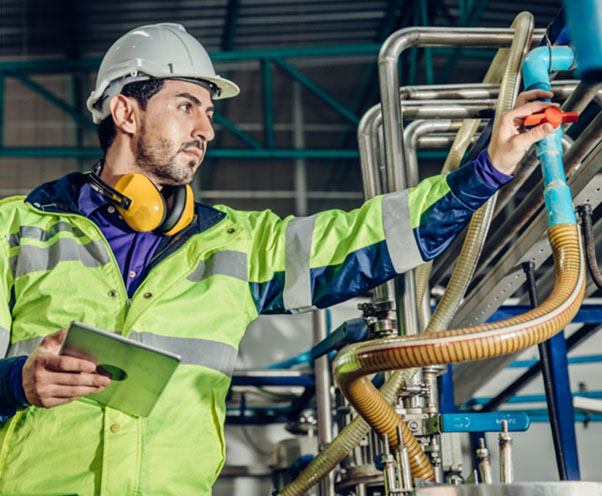Make EHS Management a Part of Corporate Culture in the Oil & Gas Industry

The oil and gas industry requires a wide range of machinery and materials for its activities ranging from drilling to servicing. The end-product being highly inflammable makes the exploration and drilling process much riskier due to the far-reaching impact of an explosion.
On the face of it, the major causes for fatalities in the oil and gas industry may seem like those found in other industries but the fatality rate is seven times higher. This makes it imperative to identify the significant hazards and determine appropriate control measures. Mitigating the severity of these hazards is essential to keep employees and the environment safe.
This blog explores the steps to make EHS a critical component of the oil & gas industry.
Importance of an Automated EHS System for Oil & Gas Industry
To balance environmental, health, or safety concerns with that of productivity and growth, oil and gas companies need an automated EHS system to have greater visibility into all their activities from a safety perspective.
Oil and gas companies need to be committed to EHS management
- • To become compliant.
- • To create the right workplace environment where employees feel confident of coming to work.
- • To minimize the damage to the environment.
This will enhance their brand image, protect stakeholder interests, and reduce the costs in the form of losses due to accidents, penalties, and loss of life. Safety leaders and senior management need to build a strong safety culture.
Steps to Make EHS Management an Integral Part of the Oil & Gas Industry
The following 10 steps can help businesses improve their safety performance and prevent accidents:
- • Define safety responsibilities across all levels of the organization.
- • Develop upstream measures based on lead indicators and define the number of reports of hazards/suggestions, number of committee projects/successes, etc.
- • Align management and supervisors through establishing a shared vision of safety and health goals and objectives versus production.
- • Implement a process that holds managers and supervisors accountable for visibly being involved, setting the proper example, and leading a positive change for health and safety.
- • Evaluate and rebuild any incentives and disciplinary systems for health and safety, as necessary.
- • Ensure the safety committee is functioning appropriately (e.g., membership, responsibilities/ functions, authority, meeting management skills, etc.).
- • Provide multiple paths for employees to bring suggestions, concerns, or problems forward.
- • Develop a system that tracks and ensures timeliness in hazard correction.
- • Ensure reporting of injuries, first aid, and near misses. Educate employees on the accident pyramid and the importance of reporting minor incidents.
- • Evaluate and rebuild the incident investigation system as necessary to ensure that it is timely, complete, and effective. The intent should be to identify the root cause rather than attributing blame to any individuals.





.png)







